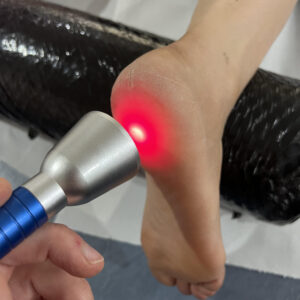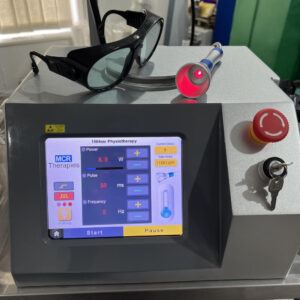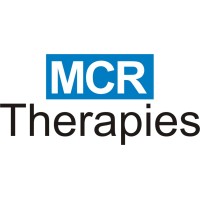Discover the Transformative Benefits of High-Intensity Laser Therapy for Enhanced Health and Wellness
In the current landscape of rapid medical advancements, it is imperative to investigate innovative and alternative Laser Therapy solutions that offer safe, effective treatment options for a diverse range of health issues. The continuous progression of technology is reshaping therapeutic practices, with a strong focus on improving patient safety while maximizing treatment effectiveness and overall outcomes.
Among the most groundbreaking innovations in this domain is high-intensity laser therapy, which has garnered considerable acclaim for its versatile applications across multiple therapeutic fields. This noninvasive procedure is proving exceptionally effective for various conditions, including chronic pain, sports-related injuries, dermatological problems, neurological disorders, and even select dental treatments.
This in-depth article explores the scientific principles that support laser treatment, outlines its extensive advantages, and assesses its potential to transform healthcare delivery systems. By leveraging light to stimulate cellular activities and accelerate recovery, this method—commonly known as photobiomodulation therapy—employs specific wavelengths emitted by lasers to achieve targeted therapeutic outcomes.
Uncover the Major Benefits and Insights of High-Intensity Laser Therapy
- High-Intensity Laser Therapy serves as a comprehensive treatment strategy, suitable for a wide array of health issues, promoting overall wellness and recovery.
- Laser Therapy stimulates the body’s natural healing processes while significantly reducing inflammation, thereby enhancing the recovery time and overall healing experience.
- The benefits of Laser Therapy encompass substantial pain relief, quicker healing durations, and improved skin conditions, all of which contribute positively to an enhanced quality of life.
- Laser Therapy frequently demonstrates superior outcomes compared to conventional treatment methods, exhibiting fewer side effects and higher levels of patient satisfaction.

High-intensity laser therapy (HILT) signifies a remarkable leap forward in medical treatments, presenting innovative solutions for an extensive range of health challenges. Its proven efficacy in pain management, rehabilitation for sports injuries, treatment of skin conditions, and alleviating neurological symptoms indicates a future where HILT could become a standard method in contemporary medical care.
The encouraging outcomes observed in pain management, injury rehabilitation, and skin issue treatments, as well as its applications in dentistry, highlight HILT’s potential as a groundbreaking therapeutic alternative.
Lasers can be classified into various types based on their intensity, including both high-intensity and low-level lasers. The foundational principles of laser therapy are grounded in its ability to engage cellular structures and penetrate tissues deeply, providing focused therapeutic benefits.
The therapeutic advantages stem from the biochemical processes that are triggered when cells absorb laser energy. These processes result in improved blood circulation, reduced inflammation, accelerated tissue healing, and increased production of adenosine triphosphate (ATP), a vital component for cellular energy generation. A key benefit of high-intensity laser therapy includes its effectiveness in alleviating pain.
When laser light is directed at specific areas, the body responds by releasing endorphins—natural compounds that help relieve pain. This characteristic is particularly advantageous for individuals suffering from chronic pain conditions such as fibromyalgia, arthritis, or chronic back pain, as it offers significant relief from persistent discomfort.
Beyond pain alleviation, laser therapy excels in diminishing inflammation. It can markedly reduce swelling, redness, and discomfort associated with various ailments, including sprains, bursitis, and tendonitis, thereby offering essential relief for those experiencing these conditions.
Moreover, laser therapy significantly improves blood flow within the affected areas, facilitating the formation of new blood vessels, which is crucial for delivering essential nutrients and oxygen to cells. This enhanced circulation supports tissue regeneration and accelerates healing processes, allowing patients to recover more quickly from injuries.
During the treatment process, the production of collagen—a fundamental protein necessary for tissue repair and healing—is stimulated, making HILT a safe, noninvasive option for individuals recuperating from injuries, surgeries, or ulcers.
Unlike invasive surgical techniques or pharmaceutical treatments, HILT does not require incisions or prescriptions, offering patients peace of mind and confidence in choosing this therapeutic approach.
Recognized as a low-risk, painless treatment alternative, laser therapy can be applied independently or in conjunction with other therapeutic modalities. It is essential to weigh the advantages and disadvantages of laser therapy in comparison to conventional medical interventions.
Traditional treatment approaches such as medication and surgery have long been foundational in patient care, demonstrating their effectiveness in numerous cases. However, these methods often come with associated risks and potential side effects.
For instance, medications may lead to adverse reactions, dependence, or long-term complications, while surgical procedures carry risks such as infections, scarring, and prolonged recovery times. In contrast, laser therapies provide a safe, noninvasive alternative capable of achieving comparable, or even superior, results to traditional methods. High-intensity laser therapy is widely acknowledged for its efficacy in pain management.
High-Intensity Laser Therapy has demonstrated remarkable success in alleviating both acute and chronic pain arising from various injuries. Conditions such as sciatica, neuropathy, and arthritis can experience substantial improvement with this effective treatment approach.
The natural endorphins released during the application of laser light to the affected area can significantly reduce pain perception, providing crucial relief for individuals facing chronic pain conditions.
 In the realm of sports medicine, laser therapy emerges as a formidable tool for expediting recovery and enhancing treatment outcomes.
In the realm of sports medicine, laser therapy emerges as a formidable tool for expediting recovery and enhancing treatment outcomes.
By applying laser energy to injured areas, it alleviates pain, diminishes inflammation, and promotes tissue healing. As a result, athletes can swiftly return to their training regimens and competitive events.
Furthermore, laser therapy serves as a preventive strategy, reducing the likelihood of injuries and boosting overall athletic performance. Numerous case studies have illustrated the effectiveness of laser therapy in addressing sports-related injuries.
Post-treatment, athletes suffering from sprains, strains, or tendonitis often report significant reductions in pain levels, enhanced range of motion, and improved functional abilities.
Skin conditions like eczema, psoriasis, and acne can greatly affect an individual’s quality of life and self-esteem. Laser therapy presents a promising alternative for rejuvenating and restoring skin health. By targeting affected areas with laser energy, it reduces inflammation, accelerates cellular turnover, and stimulates collagen production.
These effects can lead to improved skin texture, reduced redness, and minimized visibility of blemishes or scars. Beyond cosmetic enhancements, laser therapy effectively addresses serious skin concerns such as skin cancer, vitiligo, and rosacea. This noninvasive and efficient method provides patients with a pathway to regain confidence and improve their skin’s overall health.
Neurological disorders such as multiple sclerosis, neuropathy, and stroke can significantly impact an individual’s overall quality of life.
Laser therapy has emerged as a promising treatment option for these complex conditions, delivering a range of benefits to those affected. By directing laser energy to specific regions, it reduces inflammation, enhances cellular activity, and promotes neuroregeneration.
Individuals suffering from neurological disorders may experience improved nerve function, reduced pain levels, and a noticeable enhancement in their overall quality of life through the application of laser therapy. Ongoing research continues to investigate the effectiveness of laser therapy in treating neurological conditions.
Studies have shown that patients receiving laser treatments report improvements in motor skills, pain thresholds, and overall wellness. However, further studies are necessary to completely understand the underlying mechanisms and optimize treatment protocols.
Maintaining oral health is crucial for overall well-being, and laser therapy has become an invaluable tool in modern dentistry. This cutting-edge approach effectively addresses various dental challenges, including oral surgery, teeth whitening, and managing periodontal disease.
By applying laser light to targeted areas, it eliminates harmful bacteria, reduces inflammation, and facilitates tissue regeneration. This can lead to improved gum health, decreased bleeding, and enhanced oral hygiene.
The advantages of laser therapy extend into dental practices, providing precise, minimally invasive treatment options that lessen postoperative discomfort, speed up healing times, and reduce the necessity for anesthesia.
Integrating laser therapy with traditional dental interventions can significantly amplify their effectiveness. High-intensity laser therapy showcases incredible potential across various medical domains.
 Its proven efficacy, safety profile, and noninvasive nature render it a valuable alternative to conventional treatment methods. Patients can enjoy the advantages of multiple laser therapy applications, including pain alleviation, sports injury recovery, skin condition management, neurological support, and dental care.
Its proven efficacy, safety profile, and noninvasive nature render it a valuable alternative to conventional treatment methods. Patients can enjoy the advantages of multiple laser therapy applications, including pain alleviation, sports injury recovery, skin condition management, neurological support, and dental care.
With ongoing advancements in this field, the future of high-intensity laser therapy looks exceptionally bright.
As technology evolves and our understanding of the underlying principles expands, laser therapy has the potential to radically transform the healthcare landscape by delivering safe, effective solutions for a multitude of medical conditions, ultimately enhancing the quality of life for countless individuals.
Nevertheless, continued research is essential to refine treatment protocols, explore new applications, and comprehend long-term effects to fully harness the potential of high-intensity laser therapy.
With ongoing innovations in this sector, laser therapy is set to revolutionize healthcare and solidify its position as a preferred treatment option.
For further insights on this topic, click Laser Therapy for Pain Management.
Get Informed: Frequently Asked Questions About High-Intensity Laser Therapy
High-Intensity Laser Therapy Explained: What You Need to Know
High-Intensity Laser Treatment (HILT) represents a cutting-edge, noninvasive medical procedure that utilizes high-powered lasers to stimulate the body’s healing processes and alleviate pain in damaged tissues.
Understanding the Mechanisms Behind High-Intensity Laser Therapy: An In-Depth Examination
HILT delivers concentrated laser energy directly to the targeted area, activating the body’s natural healing mechanisms. This focused laser energy penetrates deeply into tissues, enhancing blood flow and oxygen delivery, minimizing inflammation, and facilitating tissue recovery.
Comprehensive Overview of Conditions Treated by High-Intensity Laser Therapy
HILT is highly versatile and effectively addresses a variety of conditions, including musculoskeletal injuries, chronic pain syndromes, arthritis, neuropathy, and an array of sports-related injuries.
Evaluating the Safety of High-Intensity Laser Therapy: Is It a Trustworthy Option?
Certainly, HILT is recognized as a safe and noninvasive treatment alternative. The laser energy utilized in HILT is meticulously controlled and monitored to ensure patient safety and prevent any potential harm.
Discovering the Benefits of High-Intensity Laser Therapy: What Can You Expect?
The advantages of HILT encompass pain reduction, decreased inflammation, improved range of motion, accelerated healing processes, and a lower reliance on medications for pain management.
Session Duration for High-Intensity Laser Therapy: What to Anticipate
The duration of a HILT session can vary based on the specific condition being addressed and the severity of the injury. Typically, each session lasts between 10 to 30 minutes.
Determining the Number of High-Intensity Laser Therapy Sessions Required
The total number of necessary HILT sessions will depend on individual patient circumstances and the particular condition being treated. While some patients may notice improvements after just one session, others might require a series of treatments over the course of several weeks or months.
The Article Laser Therapy: An Effective High-Intensity Treatment Option appeared first on https://mcrtherapies.com
The Article Laser Therapy: An Effective Treatment with High Intensity Was Found On https://limitsofstrategy.com
The Article Laser Therapy: High-Intensity Treatment That Works First Appeared ON
: https://ad4sc.com
Comments are closed